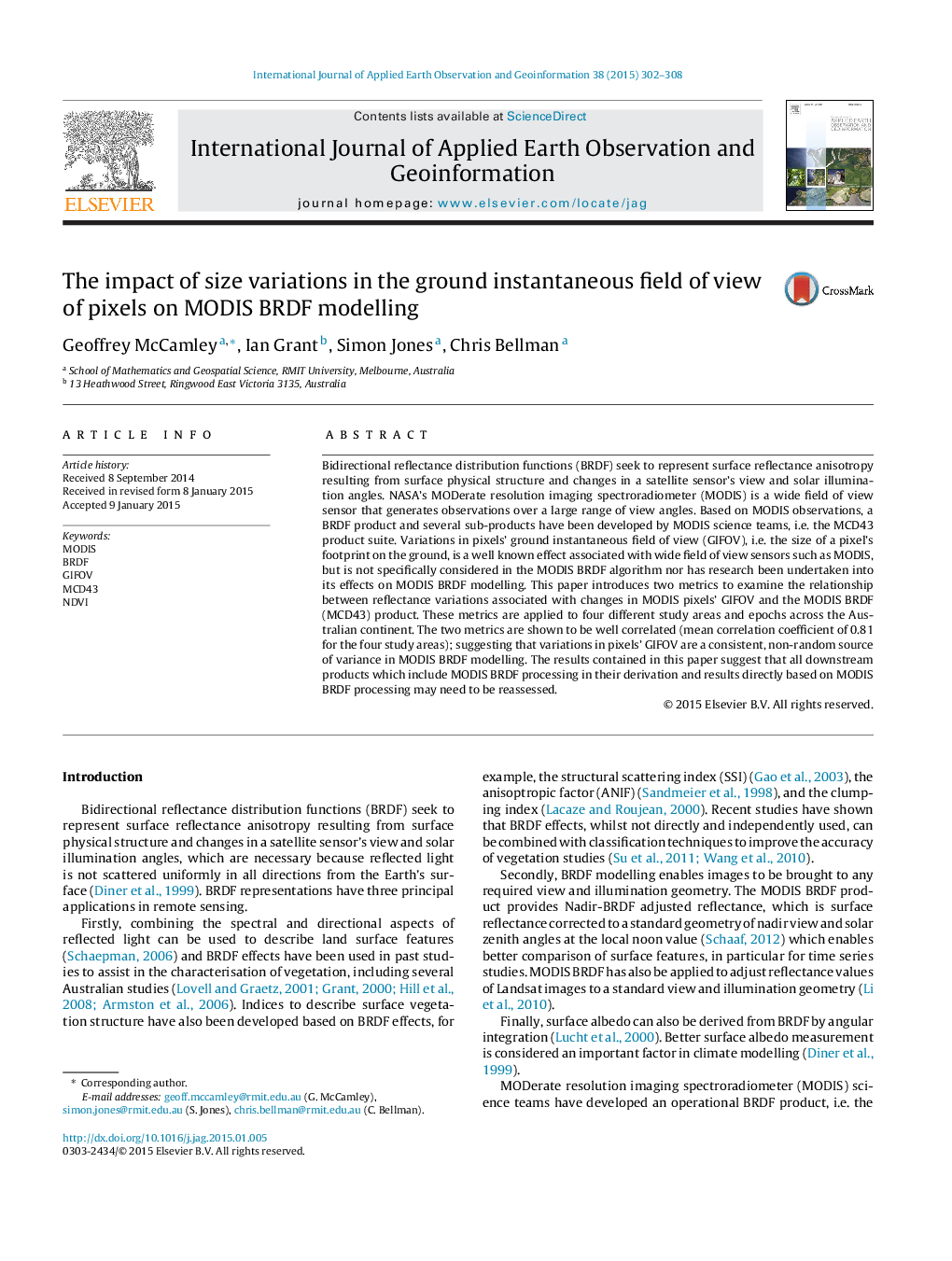| Article ID | Journal | Published Year | Pages | File Type |
|---|---|---|---|---|
| 6348702 | International Journal of Applied Earth Observation and Geoinformation | 2015 | 7 Pages |
Abstract
Bidirectional reflectance distribution functions (BRDF) seek to represent surface reflectance anisotropy resulting from surface physical structure and changes in a satellite sensor's view and solar illumination angles. NASA's MODerate resolution imaging spectroradiometer (MODIS) is a wide field of view sensor that generates observations over a large range of view angles. Based on MODIS observations, a BRDF product and several sub-products have been developed by MODIS science teams, i.e. the MCD43 product suite. Variations in pixels' ground instantaneous field of view (GIFOV), i.e. the size of a pixel's footprint on the ground, is a well known effect associated with wide field of view sensors such as MODIS, but is not specifically considered in the MODIS BRDF algorithm nor has research been undertaken into its effects on MODIS BRDF modelling. This paper introduces two metrics to examine the relationship between reflectance variations associated with changes in MODIS pixels' GIFOV and the MODIS BRDF (MCD43) product. These metrics are applied to four different study areas and epochs across the Australian continent. The two metrics are shown to be well correlated (mean correlation coefficient of 0.81 for the four study areas); suggesting that variations in pixels' GIFOV are a consistent, non-random source of variance in MODIS BRDF modelling. The results contained in this paper suggest that all downstream products which include MODIS BRDF processing in their derivation and results directly based on MODIS BRDF processing may need to be reassessed.
Related Topics
Physical Sciences and Engineering
Earth and Planetary Sciences
Computers in Earth Sciences
Authors
Geoffrey McCamley, Ian Grant, Simon Jones, Chris Bellman,
